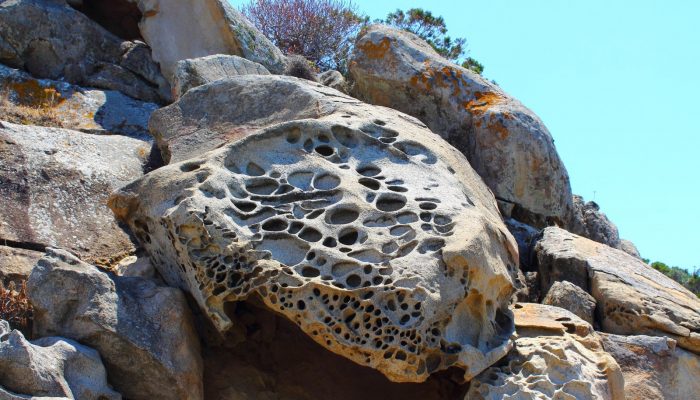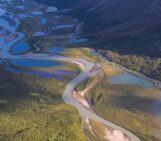
Over the course of centuries and millennia, the force of winds, seas, ice and rains, sculpt rock formations around the globe. From the world-famous glacier carved landscapes of Yosemite National Park, to the freeze-thawed hoodoos at Bryce National Park, through to the wind battered stone pillars of South China Karst, boundless geological formations have been transformed by the power of erosion and weathering.
When the force of winds and salty waters combine, their effect on the surface of rocks is quite unique. In some costal environments, a network of holes, of all shapes and sizes, puncture otherwise smooth and silky rocks. This form of weathering is aptly known as honeycomb weathering (though some of you might be more familiar with terms such as cavernous weathering, alveoli/alveolar weathering, stone lattice, stone lace or miniature tafoni weathering). Limestones, sandstones and granites are most affected.
Exactly how the interaction of the sea breeze and the salt in ocean waters results in the distinctive ‘Swiss cheese’ weathered pattern remains a bit of a mystery. One of the front running theories proposes that it is the culmination of physical and chemical weathering.
“Evaporation of leachate causes a deposition of the rocks minerals on its surface which leads to a decomposition of the rocks interior. Additionally salt weathering caused by oceanic brackish water as well as temperature changes support the formation of this feature,” explains Michael Grund, a researcher at Karlsruhe Institute of Technology.
In Corsican, Tafoni, means hole or perforated rock, so it is not surprising that this form of weathering sometimes takes its name after the Tafoni rock formation on the southern coast of Sardinia, where Michael snapped a superb example of the potholed intrusives which dominate the area.
Imaggeo is the EGU’s online open access geosciences image repository. All geoscientists (and others) can submit their photographs and videos to this repository and, since it is open access, these images can be used for free by scientists for their presentations or publications, by educators and the general public, and some images can even be used freely for commercial purposes. Photographers also retain full rights of use, as Imaggeo images are licensed and distributed by the EGU under a Creative Commons licence. Submit your photos at http://imaggeo.egu.eu/upload/.


